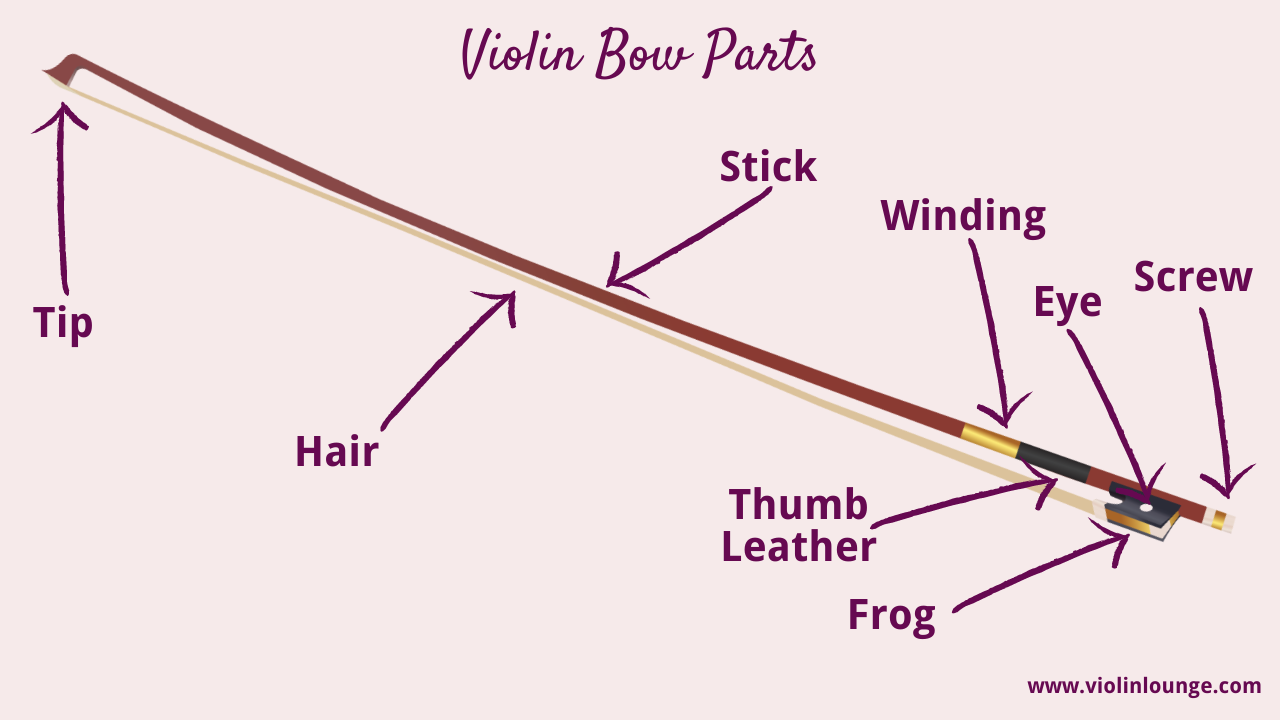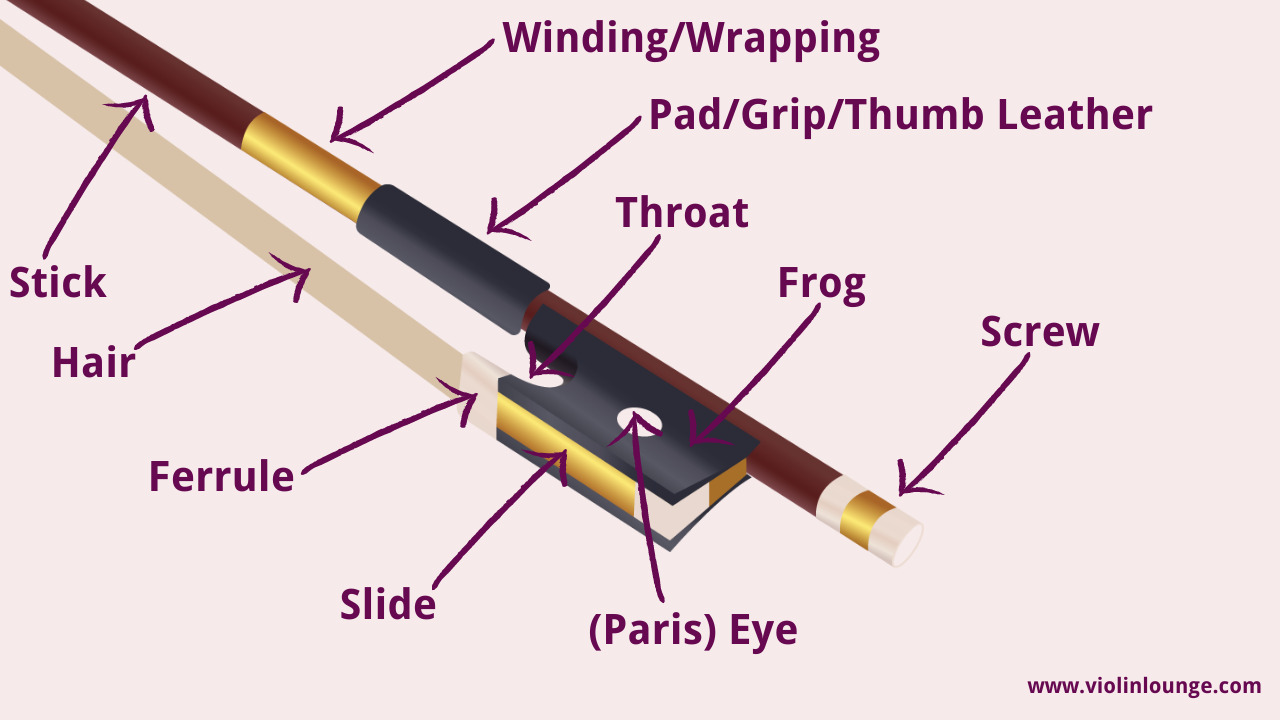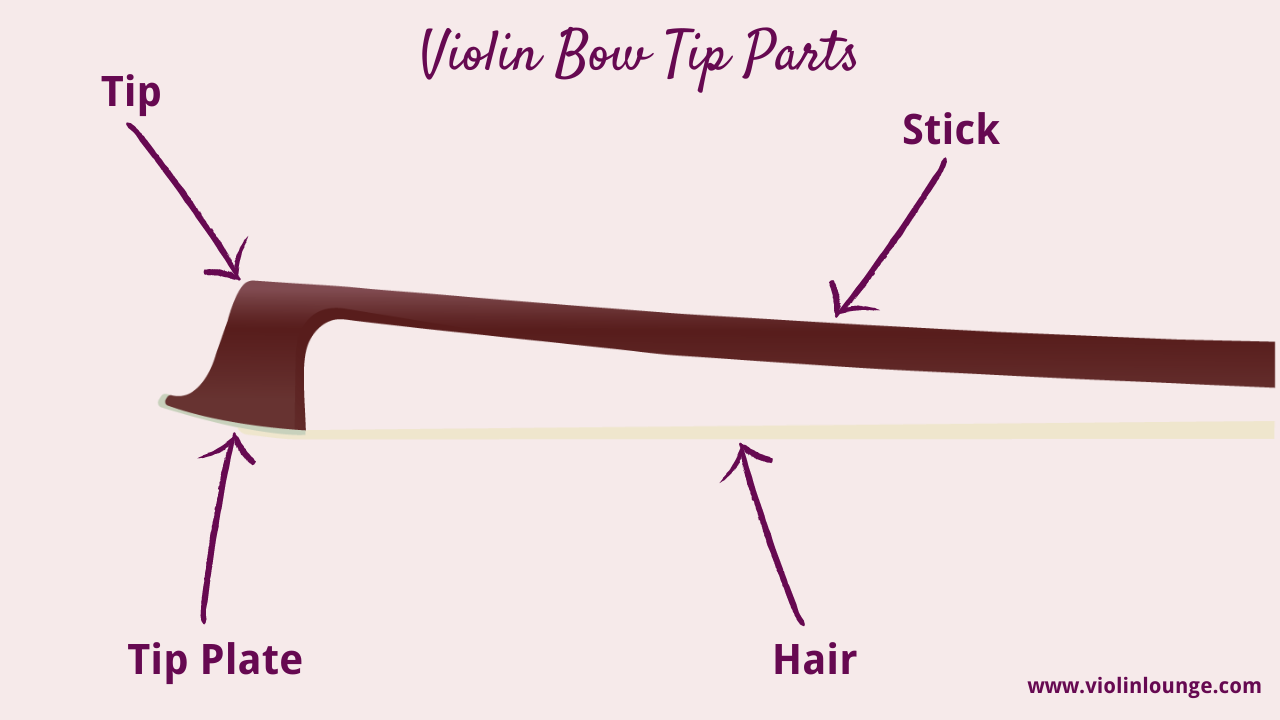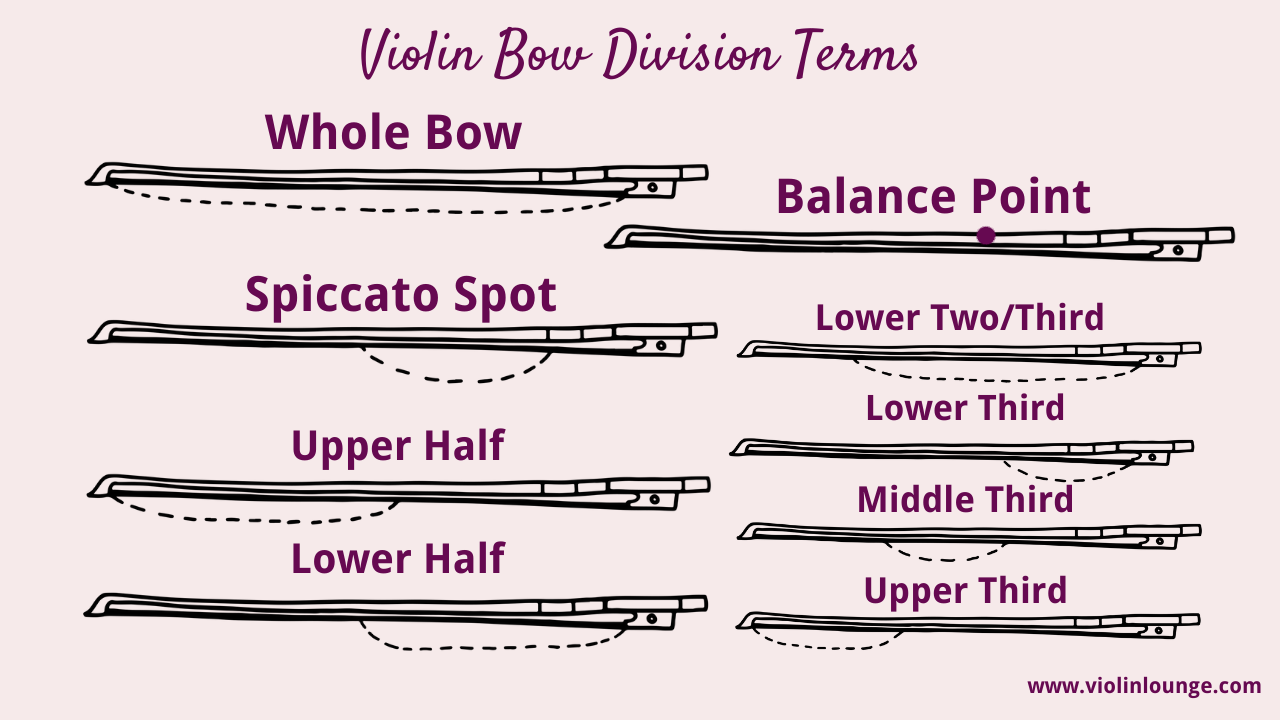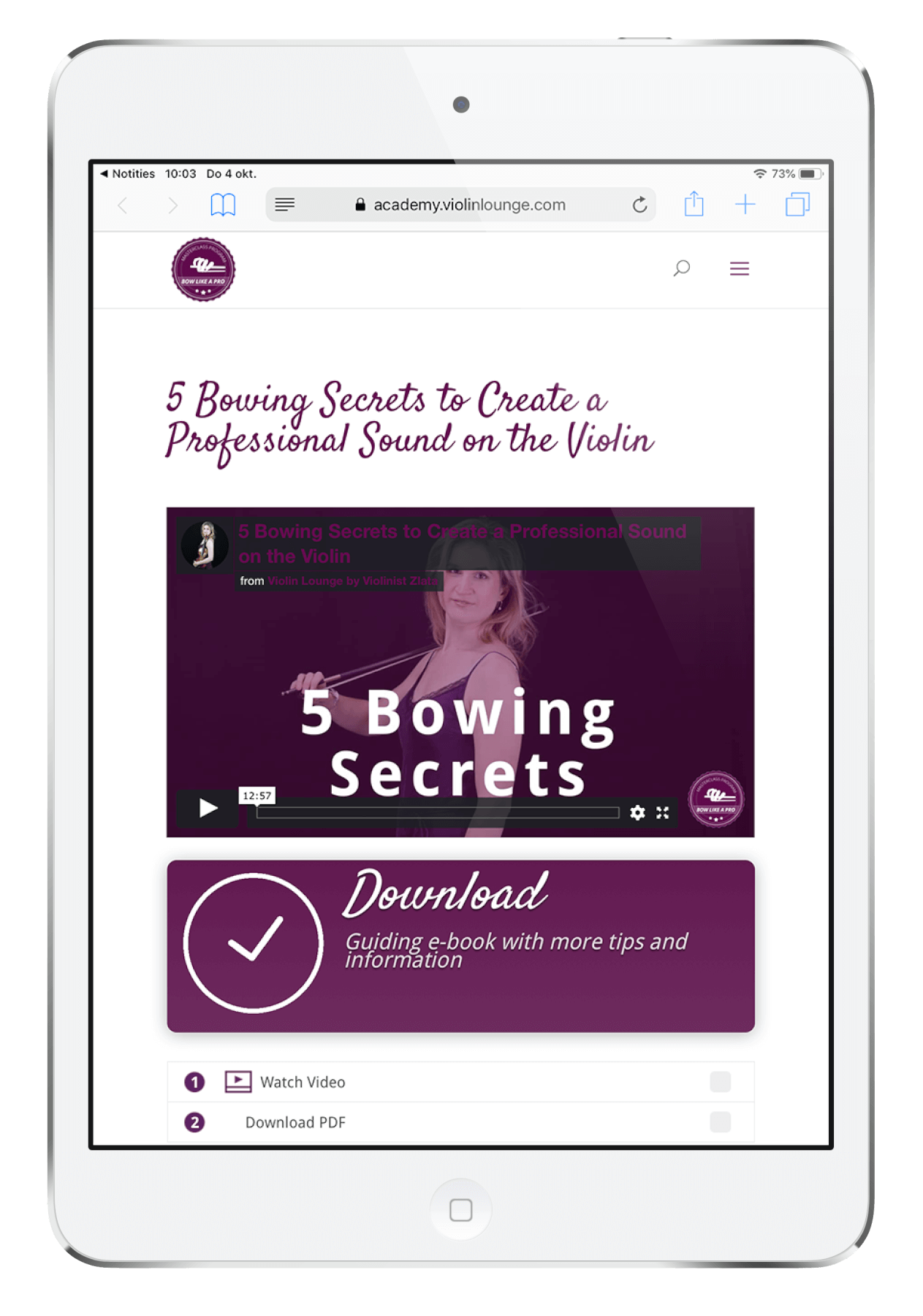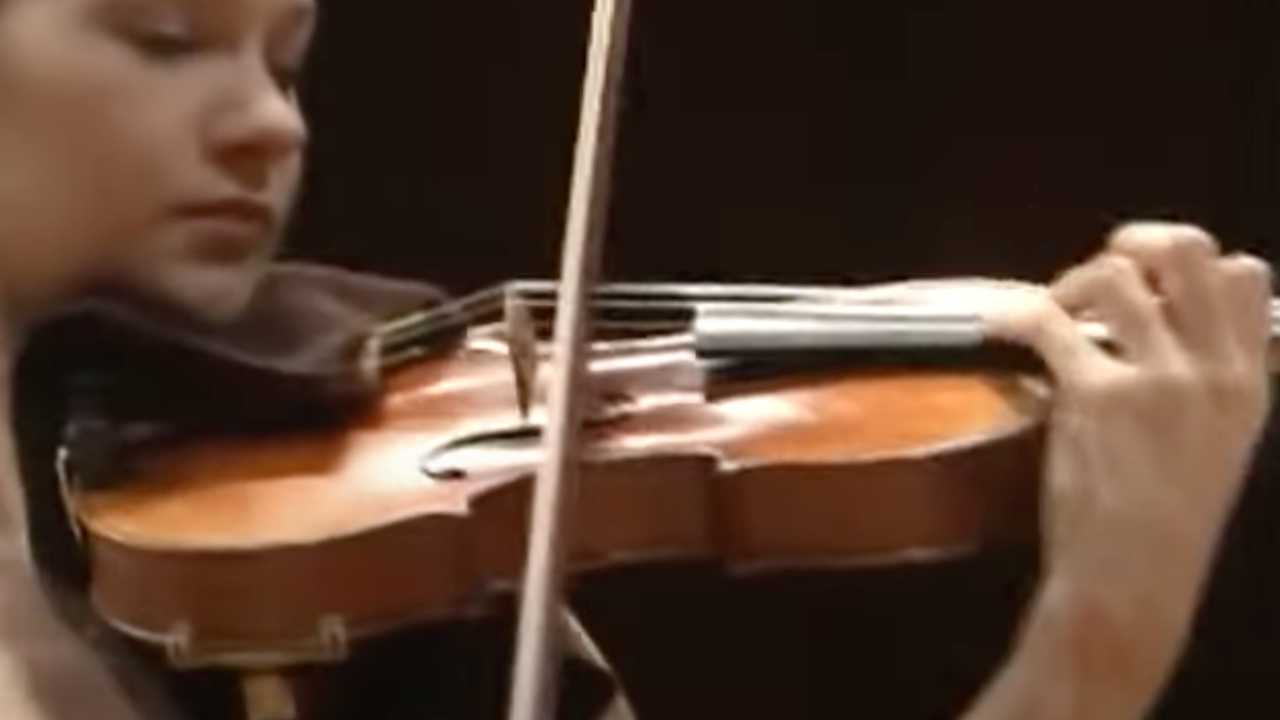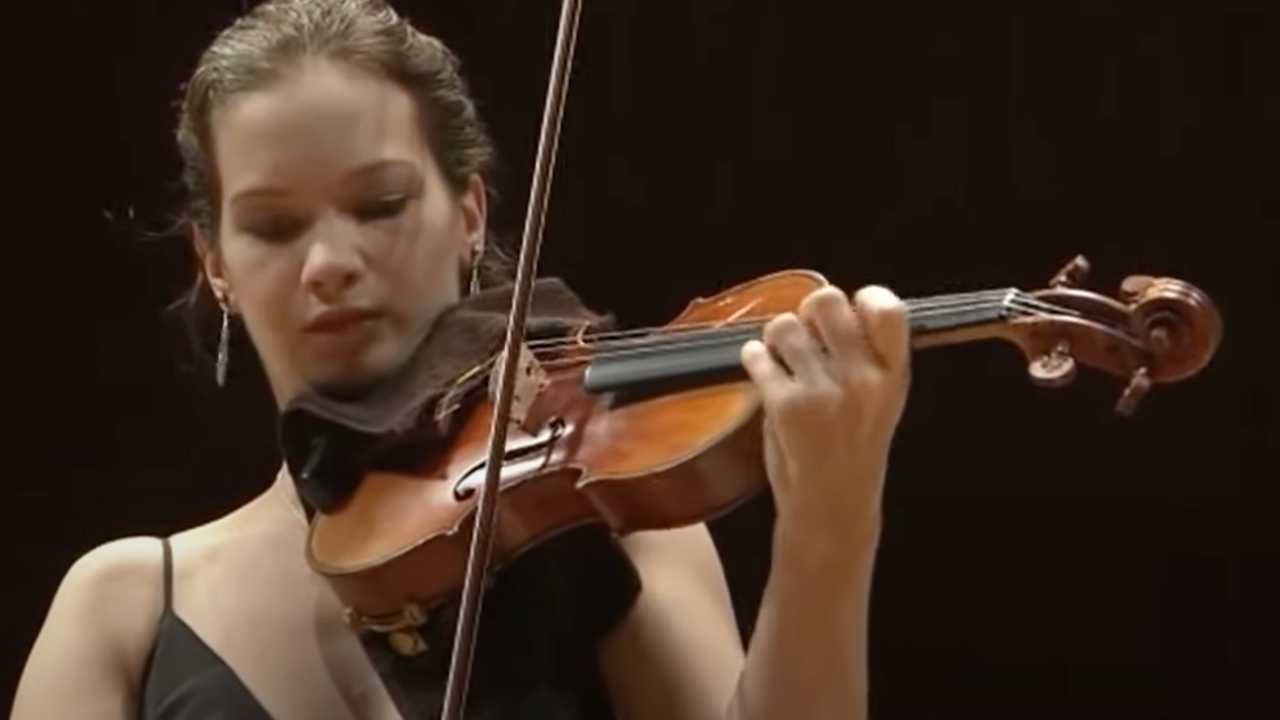How long does it take to learn the violin?
What makes you fast learner on the violin, what pieces can you play after one, two or five years and when do you start vibrato?
In this article I’ll start by explaining what determines your progress on the violin and how fast you’ll likely learn. After that I will go into what you learn in the first few months on the violin and what you can (on average) expect after a few years. I will list the pieces and let you know how much you should practice at each level.
‘How long does it take to learn to play the violin?’
Ah what a simple question, that unfortunately does not have a simple answer! The truth of the matter is that everyone learns at a different pace and everyone’s struggles are different, so the answer to this question will be different for everyone.
Additionally, is anyone ever truly done learning an instrument? I have been playing for over 20 years and I am still learning every day! Pablo Casals (a world-famous cellist) said it best. When asked why he continued to practice after dozens of years of experience, he stated, “because I think I am making progress.”
First I will go into the factors that determine how fast you will learn the violin. After that I will give you an average timeline of learning the violin.
Although it is impossible to say how long it will take you to master the instrument, here are a few important factors that can greatly impact your rate of progress:
- How much you practice
- Quality of your practice
- Quality of your violin lessons and teacher
- Age with which you started
Let’s go a bit deeper into each of them:
How much you practice the violin daily
This is most likely the biggest contributor to your progress (or lack thereof). When it comes to practice, consistency is key. When practicing, you are developing your muscle memory; and unfortunately, if you are not actively working to build this up, you are losing it. Have you ever practiced something and felt really good with the results, only to come back to it a few days later and be back at square one? Yeah, me too. One really good practice session is not enough to build up muscle memory, and if you take a few days off without training your muscles in the same way, all of that work will have been for naught.
So how long should you be practicing the violin per day?
That completely depends on your goals, your playing level, and how much time you have. Since we know that consistency is key, we can conclude that it is better to practice every day for 30 minutes than every other day for an hour. For absolute beginners, 30 minutes per day is plenty. You are training your body to move in a completely new way and you don’t want to overdo it. For late beginner and intermediate players, an hour to an hour and a half a day is a solid amount of time to see progress. Advanced players should be practicing for at least two hours per day, and those wishing to pursue a career in music should be practicing between three and five hours per day. I’ve included more detailed recommendations for practice time based on skill level and experience below.
With all this being said, life happens. We don’t always practice as much as we’d like, things come up and we have to take unplanned days off, and that’s totally okay. Please don’t beat yourself up about it; just get right back on track.
The quality of your violin practice
Have you ever driven somewhere, gotten to your destination, and had no memory of how you got there? (Because same). Similarly, have you ever finished a practice session and couldn’t remember a single thing you got done?! I definitely have, it is a frustrating feeling. It’s so easy for us to go on “auto-pilot” during practice, which is why we must actively work to keep our minds engaged at all times. Why spend your precious time practicing if you aren’t going to see results? If you practice mindlessly, you may as well not have practiced at all! Here are a few tools to help keep your mind engaged and make sure that your practice time is as efficient as possible.
Set clear goals
Before the beginning of your practice session, decide on goals for each passage you’re working on. I recommend writing them down. These goals should be specific and clearly measurable.
Example of a good goal: Improve intonation in measures 1-8. This tells you exactly what to work on and where. You can easily measure this goal by recording yourself at the beginning of the session and at the end of the session to see if the intonation improved.
Example of a bad goal: Work on page 2. Work on what exactly!? This goal is way too vague, and a whole page is most likely too broad of a section to focus on.
Use the right violin practice tools
Once you have identified your goals, write out a list of practice techniques (or “tools”) that you can use to help with the specific problem. Try all of them out, and take note of which ones work the best for you. Additionally, when tackling any passage, only focus on one problem at a time so you won’t get overwhelmed.
Not sure what violin practice tools to use? I’ve got you covered! Here’s a list of some common issues with practice techniques.
Intonation practice tools: Listening to the resonance of your instrument, practicing with a tuner, practicing with a drone, checking with your open strings
Speed practice tools: Practicing in rhythms, gradually speeding the piece up with the metronome
Memorization practice tools: Listening to the piece frequently, playing short sections with the music
String crossing practice tools: Practice the passage on open strings, practice stopping before each string crossing
Do not use mindless repetition
Yes, repetition is an important part of practicing; however, it should be done in a very calculated way. You only want to repeat a passage in the exact way you would like to play it. Think about it this way. If you play a passage incorrectly nine times, and finally get it right on the tenth time, are you more likely to play it correctly or incorrectly the next time you come to it? Incorrectly! In order for your odds to increase, after you play the passage correctly, you need to practice it nine more times to even have a 50/50 shot of playing it right on the next go around.
Measure your goals
At the end of your practice session, evaluate yourself. Ask yourself things like:
- Did I accomplish my goals?
- What went well today?
- What could I have done better today?
Some like to keep a practice journal in which you write the goals before you start practicing and you write an evaluation at the end of your practice session. Also you can make notes of the things you practiced and your to-do list for the next day.
Record yourself
This is a great, unbiased method for measuring your goals and tracking your progress. Quite often, your playing sounds different under your ear than it does to the audience. Recording yourself at the beginning and end of each practice session will help you be able to more clearly tell if your goals were accomplished.
The quality of your instruction
Simply put, your instruction can make or break your violin journey. It’s important not only to receive high-quality information, but also to receive targeted feedback, advice on practice techniques, and moral support when you’re stuck in a rut. This is why having a great instructor is so important.
Is it possible to learn the violin on your own?
Of course, it is. However, it is going to take much more time, effort, and frustration. The biggest downside to learning on your own is not receiving direct feedback on your progress. You may have access to all of the best information in the world (which you do thanks to the internet), but even though you know how to do things in theory, putting them into practice is a whole different story. Questions are bound to come up. You may not understand why something just doesn’t sound right or feel right. Even if weekly lessons are not possible, checking in with a teacher monthly (or even bi-monthly!) will make a world of difference.
The age at which you started
I do want to make one thing clear: you can learn to play the violin at a very high level, regardless of the age you started. However, the age at which you started does have an impact on how fast you will be able to progress. Children’s brains were literally made for learning, so it’s only natural that someone who started when they were a child will progress faster than someone who started when they were an adult. In my teaching experience, I’ve found a significant difference between adult learners who played for a bit as a child and those who had no prior musical experience. The students who had played as a child (even only briefly) are able to progress faster. So, if you’re an adult learner with no prior musical experience, be prepared for a slightly longer road (but remember, it is very possible!)
Timeline how long it takes to learn violin
Remember that this is only a rough guideline, so please don’t worry if you find yourself ahead or behind these suggestions.
Month One
Welcome to the violin world! In your first month of learning to play the violin, you should be getting familiar with the parts of the instrument, how to take care of it, how to hold the bow and the violin, and how to tune the violin. You may also be learning how to draw long, sustained bows on open strings. You may be discovering that the instrument is a lot more challenging than you think (who knew it took so much effort and knowledge to be able to maintain a perfectly straight bow?!) If you’re also learning how to read music for the first time, you’re getting familiar with the basics such as note values, key signatures, and time signatures.
Sample pieces: open string practice
Recommended practice time: 20-30 minutes per day.
Month Two
In month two, you have a clear idea of proper posture, but you most likely will still find yourself adjusting frequently (why won’t our pinkies just stay curved?!) You’re learning how to play on two strings (most likely A and E strings), learning how to switch between those strings, and learning how to use fingers one, two, and three, with a half step in between your second and third fingers. You’re also learning to read the notes of the tunes that you’re playing.
Sample pieces: Twinkle Twinkle Little Star, Three Blind Mice, Hot Cross Buns
Recommended practice time: 20-30 minutes per day.
Months Three through Six
In months three through six, you will learn how to play on all four strings, how to use your fourth finger, and work on slurs. You’ll expand your note-reading knowledge by learning where all of the notes in first position lie on the staff, but it might still take you a minute to figure out what each note is. At this point, you should be relatively comfortable with holding the bow, and may even start to work on loosening your bow hand up. You should be able to maintain a straight bow and solid contact point, thus producing a solid, pleasing sound.
Sample pieces: Amazing Grace, Ode to Joy, Happy Birthday
Recommended practice time: 30-45 minutes per day.
Months Seven through Twelve
You will be learning a lot of new finger positions, including the low second finger, low first finger, low fourth finger, and high third finger. These finger positions will allow you to play a much wider range of pieces. You may begin to learn about resonant intonation and start to peel away those finger tapes (if you were using them in the first place). At the end of month twelve, you should feel comfortable reading all of the notes in first position at sight, as well as all the basic rhythms such as quarter notes, half notes, whole notes, eighth notes, sixteenth notes, and their corresponding rests.
Sample pieces: Minuets 1, 2, 3, Canon in D
Recommended practice time: 45 minutes per day.
Months Thirteen through Eighteen
At this point, you are more than likely so pleased with the progress you’ve made in just a year. You remember thinking you’d never be able to sound decent, and now you’re discovering that not only is it possible, but you’ve done it! At this point, you feel comfortable playing and reading music in first position, and you may begin working with more complicated rhythms, such as dotted notes, ties, and syncopations. You will be working a lot on bow technique; specifically how to create dynamics, different bow strokes such as up-bow staccato, and lifting the bow off of the string.
Sample pieces: Boccherini Minuet, Swan Lake
Recommended practice time: 45 minutes-1 hour per day.
Months Nineteen to Twenty-Four
Now comes the fun part-shifting! When you begin learning this technique, you are officially out of the beginner stage and into the intermediate. Shifting can be a bit of a mind-bender as you’ll learn that you can play the same note in a couple of different ways on the violin. You’ll also discover that the spacing of the fingers is different in third position, so you’ll have to retrain your fingers to sit a little closer together than you’re used to. You’ll be getting used to reading notes in third position as well.
Sample pieces: Rieding Violin Concerto in B Minor, Kuchler Violin Concerto in G Major
Recommended practice time: 1 to 1.5 hours per day.
Year Three
In the first few months of year three, you’ll more than likely be learning vibrato. In my opinion, it only takes a few months to cultivate a basic vibrato but up to two years to develop a vibrato you love (so trust the process). You’ll be getting more comfortable with shifting and using it more frequently within your pieces. You’ll also be diving into double stops and chords, as well as beginning to learn three-octave scales. At this point, your note reading should be fluent through first and third positions, and you should begin familiarizing yourself with notes up through sixth position.
Sample pieces: Seitz Concerto in D Major, Vivaldi Concerto in A Minor, Bach Double
Recommended practice time: 1.5 hours per day
Year Four
Now the real fun begins! You’ve developed all of the foundational techniques you need, and now you’ll continue to refine them and dive into more advanced techniques. You’ll become comfortable with using vibrato in your pieces, work on off the string bow strokes such as spiccato and sautille, and learn to read notes higher than third position more fluently.
Sample pieces: Czardas, Schindler’s List
Recommended practice time: 1.5-2 hours per day
Year Five and beyond
Now that you have several years of experience under your belt, you can focus less on technique and more on artistry. You will begin to play major violin concertos, vary your vibrato to aid in expression, and hopefully perform with others.
Sample pieces: Accolay Violin Concerto, Mozart Violin Concerto, Beethoven Spring Sonata
Recommended practice time: 2+ hours per day

Hi! I'm Zlata
Classical violinist helping you overcome technical struggles and play with feeling by improving your bow technique.
Learning the violin is like a road trip; sure, you’re excited to get to your final destination, but you’re also enjoying the view along the way. Celebrate the little wins and know that they ultimately build to great progress.
How long did you take to learn the violin?
What do you feel ‘I can play the violin’ means? To play a simple tune or to master all Paganini caprices? Or something in between?
What’s your goal on the violin? What’s your dream piece? Can you already play it?
I’d love to read all about YOU in the comments below!

